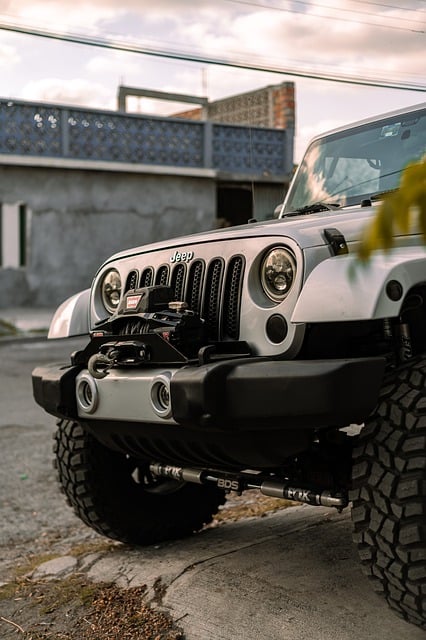When choosing a car insurance policy, understand comprehensive and liability-only options, consider personal factors like driving history, vehicle value, and risk tolerance, compare policies side by side, review coverage limits, deductibles, and perks, avoid skimping on liability, and tailor your choice to specific needs for adequate protection at a reasonable cost (How to Choose the Best Car Insurance Policy).
Understanding car insurance options is crucial for making informed decisions. This comprehensive guide will walk you through various aspects of car insurance, including types of policies, coverage details, and premium factors. Learn how to compare quotes effectively and select the right level of protection tailored to your needs. Additionally, discover common pitfalls to avoid when buying car insurance to ensure you get the best policy for your peace of mind.
Types of Car Insurance Policies: An Overview

When it comes to choosing a car insurance policy, understanding the various types available is crucial. The market offers a range of options tailored to different needs and budgets. Comprehensive coverage provides the broadest protection, covering not only accidents but also theft, natural disasters, and damage from roadside hazards. This is ideal for those who want peace of mind knowing their vehicle is fully protected. On the other hand, liability-only policies are more affordable and focus solely on covering medical expenses and property damage caused to others in an accident. They are suitable for drivers with minimal financial resources or a clean driving record looking for the most economical option.
To choose the best car insurance policy, consider your personal circumstances and risk tolerance. Assess your vehicle’s value, driving history, and the potential risks you face daily. Compare different policies side by side, evaluating coverage limits, deductibles, and additional perks like roadside assistance or rental car benefits. By understanding these variations, you can make an informed decision and select a policy that offers the right balance between protection and affordability.
Understanding Coverage and Exclusions

When comparing car insurance policies, understanding coverage and exclusions is a key step in choosing the best policy for your needs. Coverage refers to the types of damages or losses that your insurance will pay for, while exclusions are situations or events that your policy does not cover. It’s important to read through the policy details carefully to ensure you’re aware of what’s included and what isn’t.
Consider common exclusions like accidents caused by drunk driving, reckless behavior, or natural disasters, which many policies won’t cover. Additionally, look for variations in coverage limits—how much insurance will pay out if you’re at fault for an accident—as well as optional add-ons that can expand your protection beyond the basic policy. By thoroughly understanding these aspects, you’ll be better equipped to make an informed decision when selecting a car insurance policy, ensuring adequate protection while aligning with your budget.
Factors Influencing Premium Costs

When considering how to choose the best car insurance policy, understanding the factors influencing premium costs is key. Several elements play a role in determining your insurance rates. One significant factor is your driving history; safe and responsible driving habits usually result in lower premiums. Insurers assess things like moving violations, accidents, and claims history when calculating your rate.
Another crucial aspect is the type of vehicle you own. Different cars have varying levels of risk associated with them. For instance, sports cars or high-performance vehicles often come with higher premiums due to their potential for more severe accidents and increased theft risks. On the other hand, electric or hybrid cars might qualify for discounted rates as they are considered more eco-friendly. Additionally, your location, age, and credit score can all impact your insurance costs, affecting how much you pay for coverage.
How to Compare Different Quotes

When comparing different car insurance quotes, it’s essential to look beyond the price tag and scrutinize the policy details. Start by reviewing the coverage limits for liability, collision, comprehensive, and any additional perks offered. Ensure the policy aligns with your needs; for instance, if you drive an older vehicle, a comprehensive plan might be less necessary. Next, assess the deductibles; lower deductibles mean higher premiums, but they also ensure more frequent out-of-pocket expenses during claims. Read through the terms and conditions carefully to understand what’s covered and any exclusions.
Utilize online resources and compare side by side to make an informed decision. Consider seeking recommendations from trusted sources for personalized insights. Remember, the best car insurance policy is one that offers adequate protection, suits your budget, and provides peace of mind knowing you’re prepared for unexpected events on the road.
Choosing the Right Level of Protection

Selecting the appropriate coverage level is a crucial step in choosing the best car insurance policy for your needs. It involves balancing protection against cost, considering factors like your driving history, vehicle value, and personal risk tolerance. Opting for higher liability limits can provide broader protection but comes with higher premiums, while comprehensive and collision coverages add extra peace of mind but may not be necessary for all drivers.
To make an informed decision, assess the potential risks and financial implications. If you drive cautiously and own a low-value vehicle, basic liability insurance might suffice. However, if your driving record is spotty or your car is expensive, comprehensive coverage could be wise to safeguard against unforeseen events like accidents, theft, or natural disasters. Regularly reviewing and adjusting your policy aligns with how to choose the best car insurance policy tailored to your evolving needs.
Common Pitfalls to Avoid When Buying Car Insurance

When shopping for car insurance, it’s easy to fall into a few common traps that could leave you with inadequate or overly expensive coverage. One major pitfall is skimping on the amount of liability coverage. Remember, this covers damages and medical bills if you cause an accident. Opting for the lowest possible limits isn’t always the cheapest option in the long run, as accidents can result in significant costs that a low-ball policy won’t cover.
Another pitfall is ignoring your specific needs. Different policies cater to various driving profiles and vehicles. If you have a new car with advanced safety features, for example, you might qualify for discounted rates on comprehensive or collision coverage. Similarly, if you’re a safe driver or don’t drive often, specific policies designed for these scenarios could offer more affordable premiums than a standard policy.
